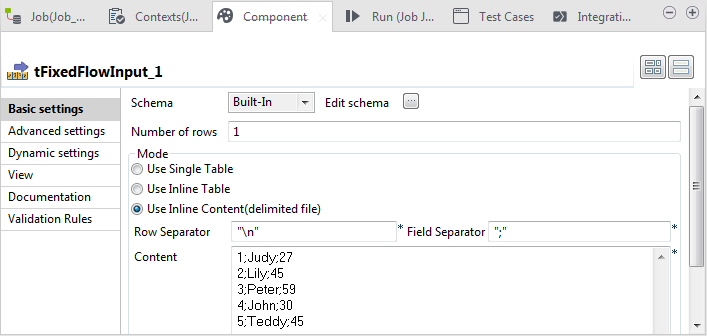Configuring the components
Configuring the tFixedFlowInput component
Procedure
Configuring the tSortRow component
Procedure
-
Double-click the tSortRow to open its Basic settings view on the Component tab.

- In the Criteria table, click the [+] button to add one row.
- In the Schema column column, select the data column on which the sorting operation is based. In this example, select age as it is the ages that should be compared and counted.
- In the sort num or alpha? column, select the type of sorting operation to perform. In this example, select num, which means numerical, as age contains integer data.
- In the Order asc or desc? column, select desc to display data on the console in descending order.
Configuring the tMemorizeRows component
Procedure
-
Double-click the tMemorizeRows component to open its
Basic settings view on the Component tab.

- In the Row count to memorize field, type in the maximum number of rows to be memorized at any given time. As in this example you need to compare ages of two customers for each time, enter 2. This component memorizes two rows at maximum at any given moment and always indexes the new incoming row as 0 and the previous incoming row as 1.
- In the Memorize column of the Columns to memorize table, select the check box(es) to determine the column(s) to be memorized. In this example, select the check box corresponding to age.




